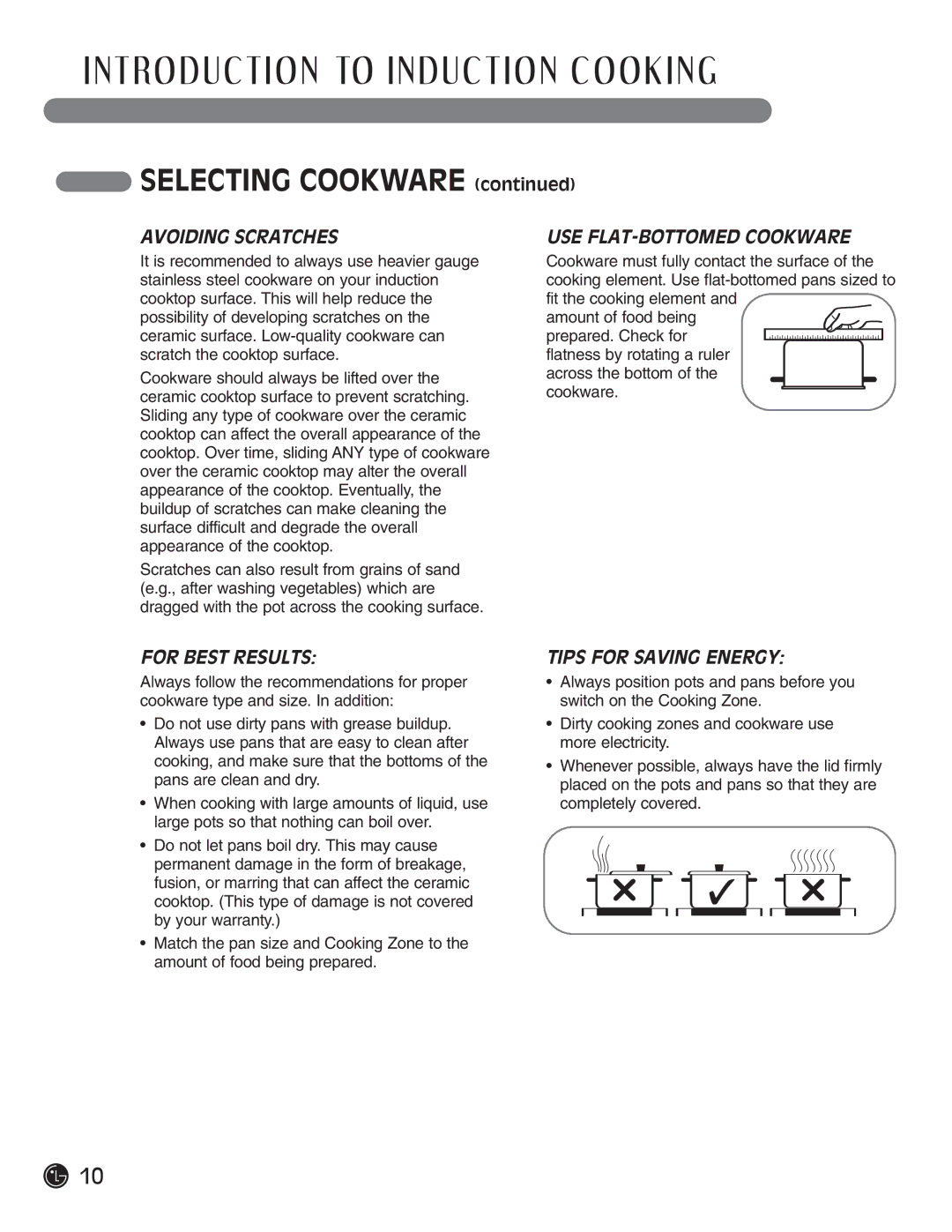
I N T RO D U C T I O N TO I N D U C T I O N C O O K I N G
 SELECTING COOKWARE (continued)
SELECTING COOKWARE (continued)
AVOIDING SCRATCHES
It is recommended to always use heavier gauge stainless steel cookware on your induction cooktop surface. This will help reduce the possibility of developing scratches on the ceramic surface.
Cookware should always be lifted over the ceramic cooktop surface to prevent scratching. Sliding any type of cookware over the ceramic cooktop can affect the overall appearance of the cooktop. Over time, sliding ANY type of cookware over the ceramic cooktop may alter the overall appearance of the cooktop. Eventually, the buildup of scratches can make cleaning the surface difficult and degrade the overall appearance of the cooktop.
Scratches can also result from grains of sand (e.g., after washing vegetables) which are dragged with the pot across the cooking surface.
USE FLAT-BOTTOMED COOKWARE
Cookware must fully contact the surface of the cooking element. Use
amount of food being prepared. Check for flatness by rotating a ruler
across the bottom of the cookware.
FOR BEST RESULTS:
Always follow the recommendations for proper cookware type and size. In addition:
•Do not use dirty pans with grease buildup. Always use pans that are easy to clean after cooking, and make sure that the bottoms of the pans are clean and dry.
•When cooking with large amounts of liquid, use large pots so that nothing can boil over.
•Do not let pans boil dry. This may cause permanent damage in the form of breakage, fusion, or marring that can affect the ceramic cooktop. (This type of damage is not covered by your warranty.)
•Match the pan size and Cooking Zone to the amount of food being prepared.
TIPS FOR SAVING ENERGY:
•Always position pots and pans before you switch on the Cooking Zone.
•Dirty cooking zones and cookware use more electricity.
•Whenever possible, always have the lid firmly placed on the pots and pans so that they are completely covered.
![]() 10
10
